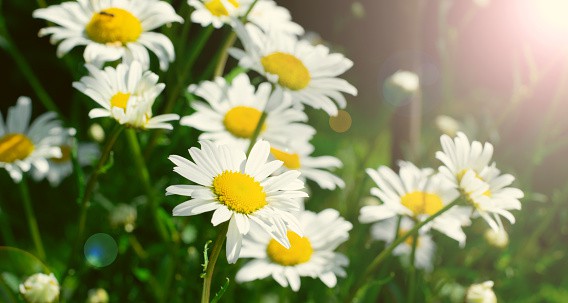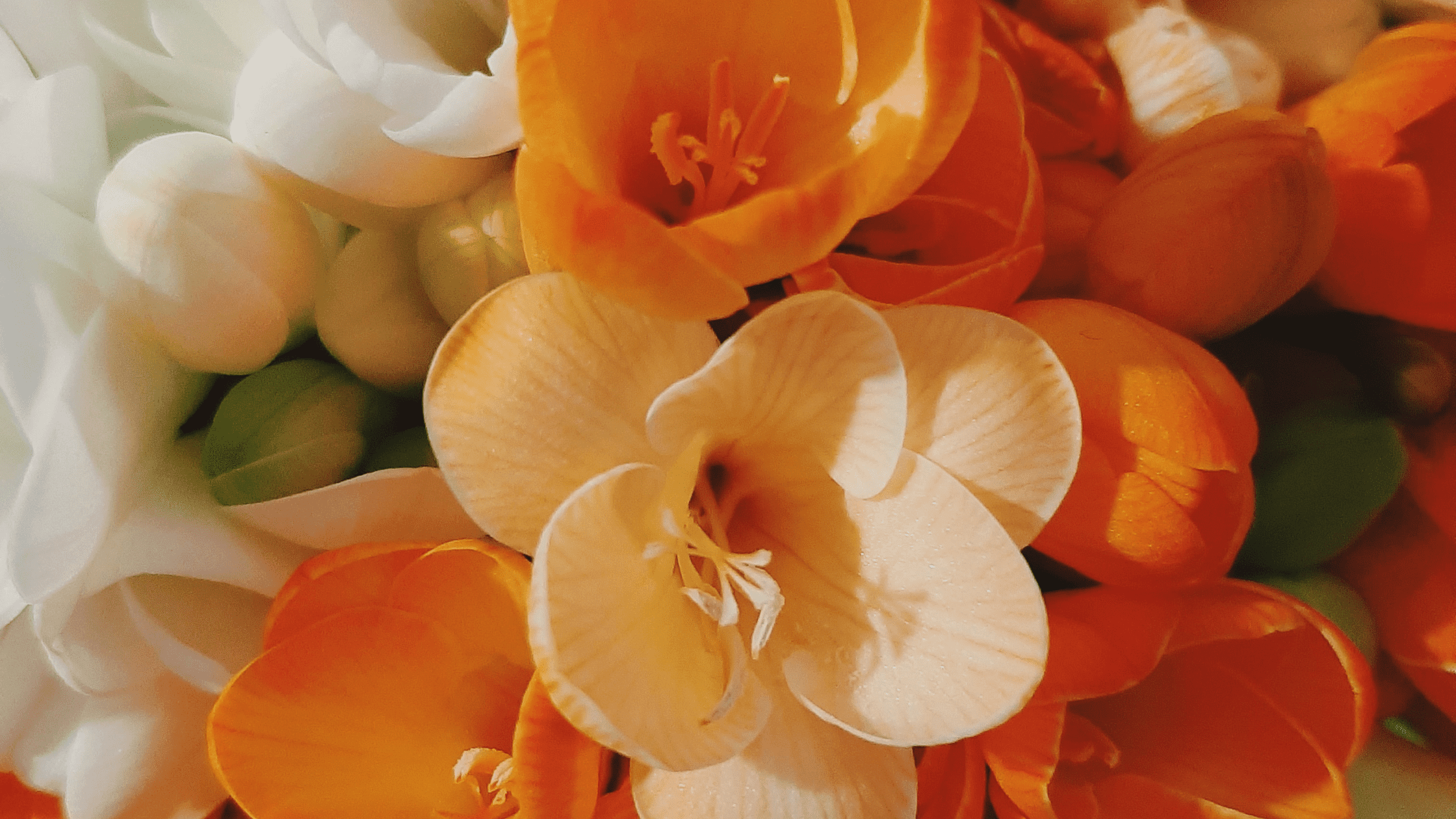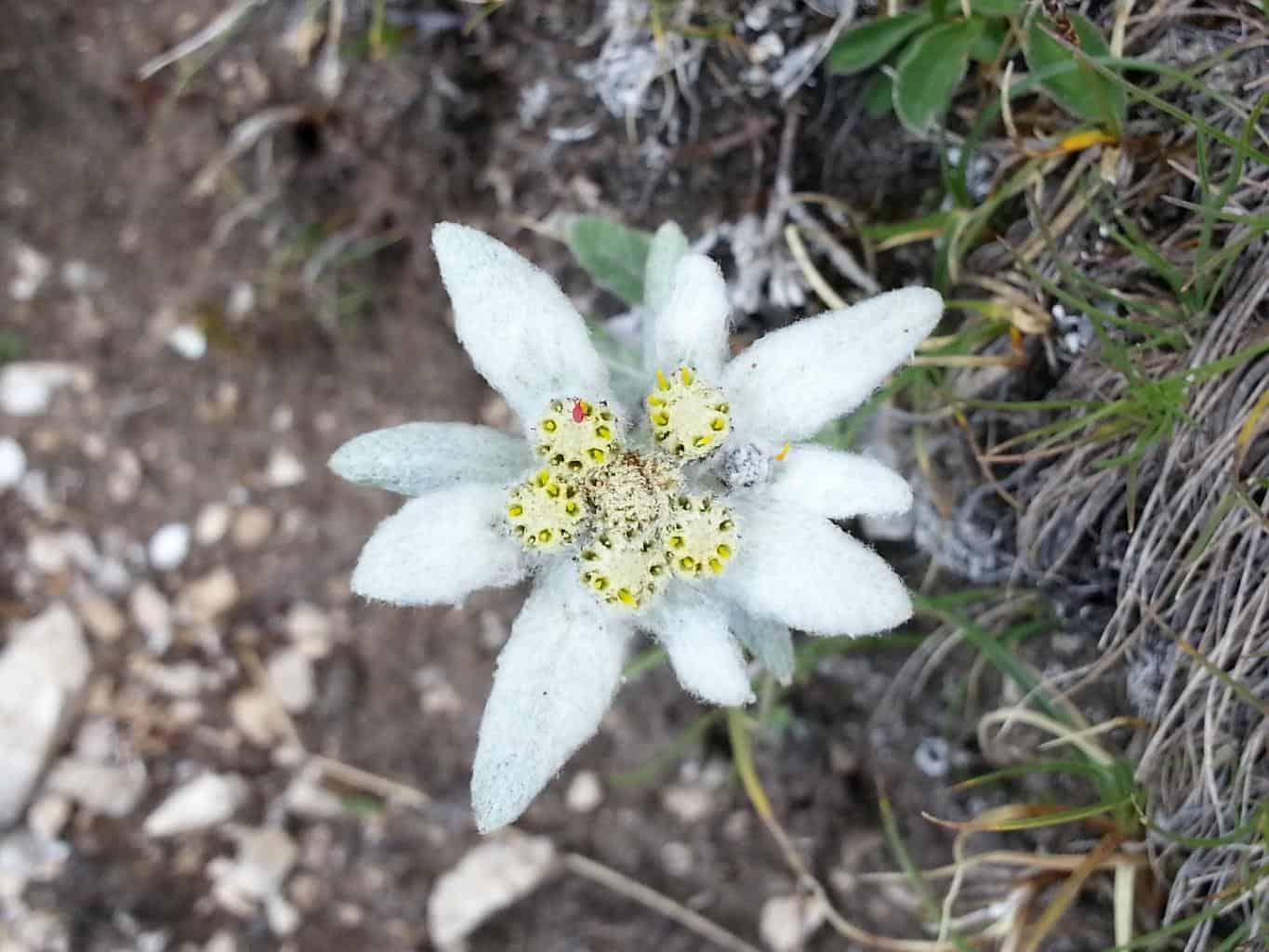Ox-eye daisy, or Leucanthemum vulgare, is a perennial flowering plant of the Asteraceae family. Growing up to 2 feet tall, this hardy and profusely blooming plant is loved for its outstanding show of the yellow and white clustered blooms. The bloom period of this beautiful flower is up to 6 weeks and it thrives in full sun exposure and warm climates.
Etymology
The genus name Leucanthemum is derived from the Greek words “leukos” meaning white and “anthemon” meaning flower, meaning literally a white flower. The species name vulgare also comes from a Latin meaning, this time “vulgaris” which refers to the widespread nature of this flower throughout the Northern Hemisphere.
How to Plant, Grow and Care for
Ox-eye daisy is best grown if you choose a spot in full sun to partial shade. It prefers a soil that is well-draining, with a neutral to slightly alkaline pH. It will tolerate less hospitable soils like clay, as long as you add a generous amount of organic matter. During dry periods and particularly during hot, dry summers, Ox-eye daisy may fail to bloom, so be sure to water it deeply and evenly during those times. If desired, apply a thin layer of mulch to retain moisture.
Regardless of the climate, the plant will require regular fertilizing. Apply a balanced all-purpose fertilizer in early spring, then again mid-summer when the first flush of blooms fade and the plant is ready for another. When the blooms begin to wane, wait until the plant is fully dormant before cutting it down or cleaning the bed in preparation for winter.
Meaning and Symbolism
Ox-eye daisy, like most daisies, is a flower that symbolizes purity, innocence, and cheerfulness. The name ox-eye is thought to be derived from the northern European concept of the Devil’s Eye, a flower believed to protect against evil spirits. The flower was thus regarded as a sign of luck and hope.
History, Mythology and Religious Significance
Ox-eye daisy has a long history, with herbals and ancient texts mentioning it as a medicinal flower that can treat toothache, sore eyes, and other maladies. The Elizabethan herbalist John Gerard said that the sap of ox-eye daisy can be used to cleanse and heal ulcers, although there are no scientific studies to back up this claim. The flower has also been used in traditional straw and twig wreaths during May Day celebrations.
In Christian mythology, ox-eye daisy is the flower of Mary, the mother of Jesus Christ. The daisy was purported to have grown in abundance in the Garden of Gethsemane, where Mary wept for her son. It is also believed that Mary used the petals of the white daisies as a soothing balm on Jesus’ brow during the final hours of his life.
Flower Varieties and Their Defining Characteristics
We find three common varieties of this hardy and profusely blooming flower in both gardens and wild settings. The most commonly known of these three is Leucanthemum vulgare, which is known for the lemony tinted centers of its yellow and white petals. Another is Leucanthemum x superbum, which has slightly larger petals and is cultivated for a more abundant and profuse blooming trait. The third variety is Leucanthemum maximum, also known as the ‘Shasta Daisy’ which is larger still and is characterized by frilly double-petalled blooms.
How to Pot and Repot
When potting Ox-eye daisy, select a pot that is slightly larger than the width of its foliage. Plant the daisy in a quality potting mix and fill the sides with porous material such as pebbles to ensure that the soil drains easily. When repotting, wait until the plant is completely dormant before transferring to a pot slightly larger than the current one, applying enough potting mix to ensure that the top of the rootball is even with the top of the pot. Use just enough new potting mix to fill the remaining sides and avoid packing it down.
How to Prune
Ox-eye daisy requires minimal pruning and should only be trimmed back when it is clearly showing signs of waning. Be sure to only remove the faded blooms and do not disturb the green stems and buds showing signs of growth. Pruning should be done during the summer months as the plant is preparing for its resting or dormant season. It is best to use sharp and sanitized secateurs when pruning to avoid damaging the flower and its delicate petals.
How to Propagate
Ox-eye daisy propagates easily from cuttings and should be done in sandy, well-draining soil when the plant is in its resting stage. A 2 – 4 inch cutting should be taken near the bottom with a sharp and clean pair of scissors and planted about 6 to 8 inches high in the sandy soil. When the cutting is taking root, a light amount of fertilizer can be applied to promote strong and plentiful blooms.
Common Pests and Diseases
Ox-eye daisy is a hardy plant that rarely suffers from any major pests and diseases. The most common pests that may affect the plant comprise of snails, slugs, and aphids. Snails and slugs can be dealt with through the application of diatomaceous earth and barrier methods, while aphids can be treated with an insecticidal soap spray. Avoid other chemical-based treatments as these may damage the delicate petals of the blooms.
Frequently Asked Questions about Leucanthemum Vulgare
Q: How often should I water Ox-eye daisy?
A: The plant should be watered on an average basis, especially during hot and dry seasons. Don’t water too much and make sure the drainage is good.
Q: How can I make the flower bloom abundantly?
A: If you want the flower to bloom abundantly, you’ll need to apply a balanced all-purpose fertilizer in early spring and mid-summer.
Q: How do I propagate Ox-eye daisy from cuttings?
A: You can propagate Ox-eye daisy from cuttings taken from the bottom portion during the resting stage. Plant the cuttings in water or a sandy, well-draining soil and fertilize lightly to encourage strong blooms.
Fact Sheet for Ox-Eye Daisy – Leucanthemum vulgare
| Name | Leucanthemum vulgare |
|---|---|
| Family | Asteraceae |
| Plant Type | Perennial |
| Mature Size | 2 ft. |
| Sun Exposure | Full Sun |
| Soil Type | Well-draining |
| Soil pH | Neutral to Slightly Alkaline |
| Bloom Time | Spring to Early Summer |
| Flower Color | White and Yellow |
| Hardiness Zones | 3 – 8 |
| Native Area | Northern Hemisphere |
What we love from Amazon this week
Buy these wonderful flowers directly from Amazon:















